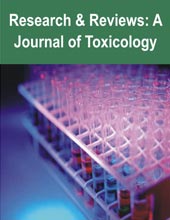Alyaa Neamah Najm Alsaedi,
Faten Hadi Fakhri,
- Assistant Lecturer, University of Karbala Presidency, Department of Studies and Planning, Karbala, Iraq
- Assistant Lecturer, Department of Studies and Planning, Presidency University of Kerbala, Karbala, Iraq
Abstract
The application of nanoparticles in drug delivery and biomedical therapies holds great promise, yet their interaction with cells and the underlying molecular mechanisms remains areas of active research. This study explores the molecular mechanisms of nanoparticle-cell interactions, focusing on the effects of gold nanoparticles (AuNPs) and silica nanoparticles (SiNPs) in human cancer cell lines (HeLa and MCF-7). The study examines how nanoparticles are internalized by cells, their impact on cellular toxicity, oxidative stress, apoptosis, and their gene expression profiles. The findings reveal that nanoparticles, particularly functionalized particles, enhance cellular uptake via specific receptors and surface modifications, such as PEGylation and targeting peptides. Functionalization improves targeting specificity, while also inducing a significant increase in reactive oxygen species (ROS), leading to oxidative stress and cell death through apoptotic pathways. Gene expression analysis showed upregulation of apoptosis-related genes, such as Bax and Caspase-3, and oxidative stress markers like SOD and Catalase. However, while these effects contribute to the therapeutic potential of nanoparticles, they also highlight the need for careful management of nanoparticle toxicity, particularly with regards to non-target tissues. Research demands additional investigation of nanotechnology for biocompatibility testing along with toxicity assessment and targeting efficiency evaluation as healthcare authorities establish guidelines for medical applications. Studies should focus on long-term in vivo analysis of nanoparticles as well as advanced drug release strategies to maximize their clinical applications for delivering medicines in cancer treatment.
Keywords: Cancer, Toxicity, SOD, Nano, Cell
[This article belongs to Research and Reviews: A Journal of Toxicology ]
Alyaa Neamah Najm Alsaedi, Faten Hadi Fakhri. Study Review: Molecular Mechanisms of Nanoparticle-Cell Interaction – Implications for Drug Delivery and Toxicity. Research and Reviews: A Journal of Toxicology. 2025; 15(02):31-40.
Alyaa Neamah Najm Alsaedi, Faten Hadi Fakhri. Study Review: Molecular Mechanisms of Nanoparticle-Cell Interaction – Implications for Drug Delivery and Toxicity. Research and Reviews: A Journal of Toxicology. 2025; 15(02):31-40. Available from: https://journals.stmjournals.com/rrjot/article=2025/view=208607
References
- Allen TM, Cullis PR. Liposomal drug delivery systems: From concept to clinical applications. Adv Drug Deliv Rev. 2013;65(1):36–48.
- Azzam T, Elsayed M, Farag MA. Biodegradable nanoparticles for targeted drug delivery: Current trends and future prospects. Int J Nanomed. 2020;15:1215–32.
- Raheem DA, Abd AMZ. Biosynthesis, characterization, antioxidant and antihemolysis activity of silver nanoparticles (AgNPs) produced using Cynophyta alga extract (Spirulina platensis). Al-Harf J. 2023;19(November).
- Ding L, Zheng C, Sun Y, Zhang Y, Wang Y, Jiang W, et al. Smart nanoparticles for cancer therapy: Current progress and future challenges. Biomater. 2019;199:59–74.
- ALabbasy AJ, Naeem AK. The biosynthesis of metal nanoparticles by a variety of organisms. Al-Harf J. 2024;20(February).
- Abdul Aal RH, Alkaabi SJ. Inhibition activity of silver nanoparticles (AgNPs) biosynthesized by (Ziziphus spina-Christi) leaf extract against local pathogenic bacterial isolates. Al-Harf J. 2024;22(August).
- López M, Mitragotri S, Ettehadieh B. Regulatory concerns for nanomedicine. Nat Nanotechnol. 2015;10(7):342–4.
- Tenzer S, Docter D, Rosfa S, Wlodarski A, Kuharev J, Rekik A, et al. Nanoparticle–protein corona: A critical review. Nat Nanotechnol. 2013;8(9):531–40.
- Sahay G, Alakhova DY, Kabanov AV. Nanoparticle-based drug delivery: A review of drug delivery systems using nanoparticles for cancer treatment. Nanomed. 2013;9(4):1033–45
- Yin H, Wang J, Wang H, Zhang L. Surface modification of nanoparticles for targeted drug delivery. J Nanomater. 2014;2014:4.
- Wang X, Yang L, Chen Z, Shin DM. Cellular uptake and toxicity of gold nanoparticles. Int J Nanomed. 2013;8:2549–58.
- Luo D, Wang X, Zeng S, Ramakrishna S. The cellular responses to nanoparticles and their potential applications in drug delivery. Biochim Biophys Acta Gen Subj. 2018;1862(5):1449–63.
- Brannon-Peppas L, Blanchette JO. Nanoparticle and targeted systems for cancer therapy. Adv Drug Deliv Rev. 2012;64(7):560–7.
- Alvarez MG, Sharma V, Kim D, Park J. Targeted drug delivery using nanoparticles for cancer therapy: A review. Biotechnol Adv. 2016;34(5):508–16.
- Jain RK. Nanoparticle-based drug delivery for cancer therapy. Nat Rev Drug Discov. 2017;16(4):207–22.
- Choi J, Kim HY, Ju EJ, Jung J, Park J, Hong S, et al. Enhanced permeability and retention (EPR) effect of nanoparticles in tumor tissue. Cancer Res. 2010;70(12):5085–94.
- Oberdörster G, Oberdörster E, Oberdörster J. Toxicology of nanoparticles: A historical perspective. Nanotoxicol. 2005;1(1):1–23.
- Nel AE, Mädler L, Velegol D, Xia T, Hoek EM, Somasundaran P, et al. Toxicological and safety aspects of nanomaterials. Nanosci Nanotechnol. 2006;1(4):290–6.
- Kastner S, Schaffler M, Sommer C, Laschinger M, Rädler JO. Nanoparticle toxicity and the role of the protein corona. J Nanobiotechnol. 2016;14(1):12.
- Hussain SM, Hess KL, Gearhart JM, Geiss KT, Schlager JJ. In vitro toxicity of nanoparticles in human lung cells. Toxicol In Vitro. 2005;19(7):975–83.
- Liu Y, Shipton M, Ryan J, Kaufman ED, Franzen S, Feldheim DL. Mechanisms of nanoparticle-induced toxicity and biocompatibility. J Nanomater. 2013;2013:4.
- Peters TM, Elzey S, Johnson ME, Park H, Grassian VH, Maher T, et al. Nanoparticles in biological systems: The need for improved biocompatibility and safety. Nanomed. 2019;18:79–93.
- Choudhury AR, Khan R, Bhattacharjee A, Barman P, Mitra DK. Nanoparticle-mediated apoptosis and inflammation in cancer therapy. Nanomed. 2019;15(1):41–58.

Research and Reviews: A Journal of Toxicology
| Volume | 15 |
| Issue | 02 |
| Received | 27/03/2025 |
| Accepted | 04/04/2025 |
| Published | 23/04/2025 |
| Publication Time | 27 Days |
PlumX Metrics
